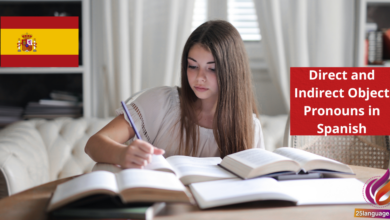Introduction to Spanish Grammar

Spanish grammar forms the backbone of effective communication in one of the worldS most widely spoken languages. As we embark on this journey, you’ll discover the beauty of sentence structure, verb conjugations, and the essential role of gender in nouns. Understanding these fundamental concepts will empower you to express yourself clearly and confidently, unlocking opportunities to connect with millions of Spanish speakers around the globe. Let’s dive into the captivating world of Spanish grammar!
Navigating the Basics of Spanish Grammar
One of the foundational aspects of Spanish grammar is the concept of gender in nouns. In Spanish, nouns are either masculine or feminine, which affects the articles and adjectives associated with them. To determine the gender of a noun, you can follow these simple rules:
- Nouns that end in -o are typically masculine (e.g., niño – boy).
- Nouns that end in -a are usually feminine (e.g., niña – girl).
- Some nouns that end in -e or consonants can be either, so these must be memorized (e.g., estudiante – student, which can be both masculine and feminine).
In addition to understanding noun gender, learners must also grasp how to conjugate verbs based on the subject of the sentence. Spanish verbs fall into three main categories based on their endings: -ar, -er, and -ir. To illustrate, here’s the present tense conjugation of the verb hablar (to speak):
| Subject Pronoun | conjugation | Translation |
|---|---|---|
| Yo | hablo | I speak |
| Tú | hablas | You (informal) speak |
| Él/Ella/Usted | habla | He/She/You (formal) speak |
| Nosotros/Nosotras | hablamos | We speak |
| Vosotros/Vosotras | habláis | You all (informal, in Spain) speak |
| Ellos/Ellas/ustedes | hablan | They/You all (formal) speak |
Essential Elements of Sentence Structure in Spanish
One of the fundamental aspects of Spanish sentence structure is the Subject-Verb-Object (SVO) order, similar to English. in a basic sentence, the subject performs the action of the verb, and the object receives the action. For instance:
- Subject: Yo (I)
- Verb: como (eat)
- Object: manzana (apple)
This leads to the complete sentence: Yo como manzana. (I eat an apple). Though, Spanish allows some flexibility in word order for emphasis or style, commonly achieving this through inversion. For exmaple, to emphasize the action, one might say, Manzana como yo. (An apple, I eat).
Another crucial element is adjective placement. Unlike in English, where adjectives typically precede nouns, Spanish adjectives usually follow the noun they modify. For example:
- Noun: casa (house)
- Adjective: grande (big)
This results in: casa grande (big house). Though, some adjectives can precede the noun, frequently enough altering the meaning or emphasizing a quality, such as in gran casa (great house or big house, with a sense of admiration).
| Spanish Example | Rule Explanation | English Translation |
|---|---|---|
| Yo como manzana. | Subject-Verb-Object structure. | I eat an apple. |
| Manzana como yo. | Inverted word order for emphasis. | An apple, I eat. |
| casa grande | Adjective follows noun in Spanish. | big house. |
| gran casa | Adjective can precede noun to alter meaning. | great house. |
Understanding Verb Conjugations for Effective Communication
In Spanish, verbs are conjugated to express different tenses, moods, and subjects. The main conjugation forms are present, past, and future. Each tense has specific rules and endings that vary based on the subject pronoun.For example, the verb hablar (to speak) in the present tense is conjugated as follows:
- yo hablo (I speak)
- tú hablas (you speak – informal)
- él/ella/usted habla (he/she speaks, you speak – formal)
- nosotros/nosotras hablamos (we speak)
- vosotros/vosotras habláis (you all speak – informal in Spain)
- ellos/ellas/ustedes hablan (they/you all speak – formal in Latin America)
Understanding these conjugations is essential for effective communication. Additionally, the past tense has regular and irregular forms, such as the verb comer (to eat). The preterite tense for comer is:
- yo comí (I ate)
- tú comiste (you ate)
- él/ella/usted comió (he/she/you ate)
- nosotros/nosotras comimos (we ate)
- vosotros/vosotras comisteis (you all ate – informal in Spain)
- ellos/ellas/ustedes comieron (they/you all ate)
| Spanish Example | Rule | English Translation |
|---|---|---|
| yo hablo | present tense, yo form | I speak |
| nosotros hablamos | Present tense, nosotros form | We speak |
| yo comí | Preterite tense, yo form | I ate |
| ellos comieron | Preterite tense, ellos form | They ate |
Mastering Nouns and Articles in the Spanish Language
Nouns in Spanish are classified as masculine or feminine, which affects the articles used. Masculine nouns typically end in “-o,” while feminine nouns usually end in “-a.” however, there are exceptions, such as “el agua” (the water), which is feminine despite starting with a vowel. to form the definite articles, you use “el” for masculine singular nouns and “la” for feminine singular nouns. For plural forms, “los” is the masculine plural article and “las” is the feminine plural article. For example:
- el libro (the book) – masculine
- la mesa (the table) – feminine
- los libros (the books) – masculine plural
- las mesas (the tables) – feminine plural
Indefinite articles are used to refer to unspecified nouns. They also change according to gender and number: “un” for masculine singular, “una” for feminine singular, “unos” for masculine plural, and “unas” for feminine plural. Here are some examples to clarify their use:
| Spanish Example | Type of Article | English Translation |
|---|---|---|
| un perro | Indefinite, masculine singular | a dog |
| una casa | Indefinite, feminine singular | a house |
| unos perros | Indefinite, masculine plural | some dogs |
| unas casas | Indefinite, feminine plural | some houses |
In Retrospect
¡Felicidades! Hemos llegado al final de nuestra lección sobre la introducción a la gramática española. Hoy hemos explorado algunos de los fundamentos esenciales que son la base de este hermoso idioma. Hablamos sobre la estructura de las oraciones, los sustantivos y los adjetivos, así como la importancia de los verbos en la comunicación. Estos conceptos son solo el comienzo de tu viaje en el aprendizaje del español.
Recuerda,la gramática es como la estructura de un edificio; proporciona el soporte necesario para que puedas construir oraciones más complejas y expresivas. Te animo a que practiques lo que has aprendido hoy. Dedica tiempo a crear tus propias oraciones,leer en español y tratar de hablar con hablantes nativos o compañeros de aprendizaje. Cada pequeño esfuerzo te acercará más a la fluidez y te abrirá las puertas a una nueva cultura.
No te desanimes si encuentras obstáculos en el camino; cada error es una oportunidad para aprender y crecer. Mantén una actitud positiva y continúa explorando con curiosidad. ¡Tu esfuerzo te llevará lejos! Estoy emocionado por lo que lograrás en las próximas lecciones. ¡Sigue adelante y disfruta del viaje del aprendizaje del español! ¡Hasta la próxima!





























